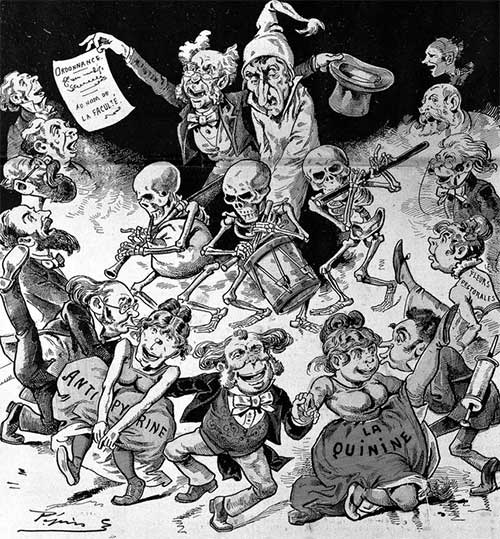In 1889, a mysterious respiratory illness emerged in Russia and subsequently spread globally, causing at least three waves of infection over the following years. Currently, some scientists suspect that this illness, known as the “Russian flu,” may actually be caused by a virus similar to SARS-CoV-2, the virus responsible for Covid-19, according to The New York Times.
The 1889–1890 influenza pandemic, commonly referred to as “Asian flu” or “Russian flu,” was a worldwide respiratory virus pandemic. It was the last major pandemic of the 19th century and one of the deadliest pandemics in history.

The Russian flu, or the Asian flu of 1889-1890, was the deadliest pandemic in human history.
There are several striking similarities that can be drawn between the two pandemics. For example, during the Russian flu pandemic, schools and workplaces had to close due to the overwhelming number of infections. Infected individuals often lost their sense of taste and smell, and some symptoms persisted for months.
Generally, the Russian flu appeared to kill more elderly individuals than children, unlike the influenza virus, which tends to cause similar mortality rates in both age groups, according to available historical records, including government health records, newspapers, and journal articles.
Peter Palese, a flu researcher and professor of medicine at the Icahn School of Medicine at Mount Sinai in New York, conveyed this to The New York Times. Some experts echo this sentiment, but others express skepticism, stating that while there may be evidence, it is challenging to support this idea, and they have yet to find conclusive evidence.
Dr. Jeffery Taubenberger, head of the pathology and virus evolution department at the National Institute of Allergy and Infectious Diseases, and John Oxford, an emeritus professor of virology at Queen Mary University of London, are on the hunt for such evidence. They have been searching for preserved lung tissue samples from before the 1918 flu pandemic, looking for remnants of both the flu virus and coronaviruses. Among these tissues, they hope to discover the elusive Russian flu virus.
Dr. Scott Podolsky, a professor of social medicine and global health at Harvard Medical School, and Dominic W. Hall, curator of the Warren Anatomical Museum at Harvard, are also searching for preserved lung tissues from this same period, The New York Times reported.
If genetic material from the Russian flu virus is found in these lungs, it could provide clues about how the pandemic ended, as news reports from that time offer very little detailed information.
And if the late 19th-century pandemic was caused by a coronavirus, some scientists believe that this virus may still circulate as one of the four coronaviruses that cause the common cold, rather than causing severe illness.


















































